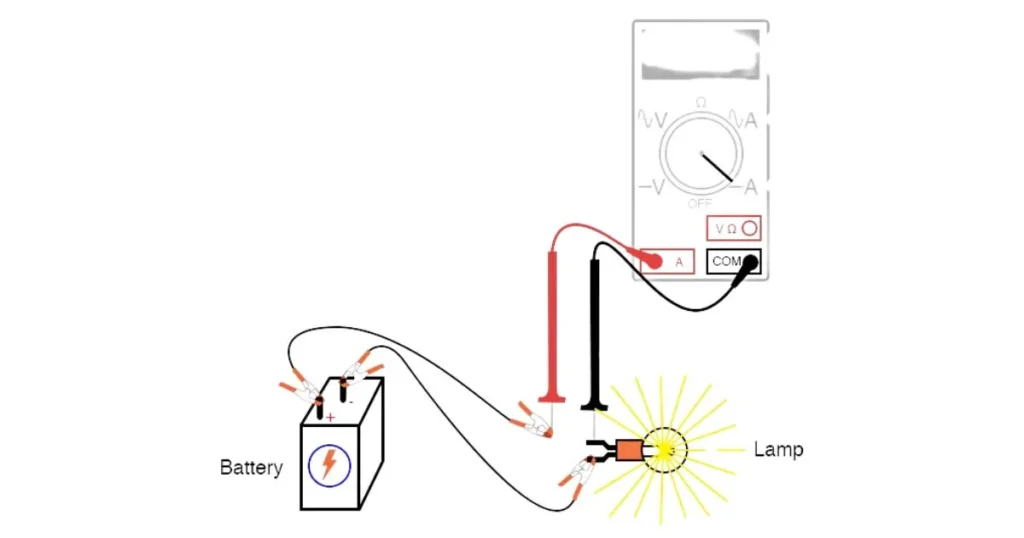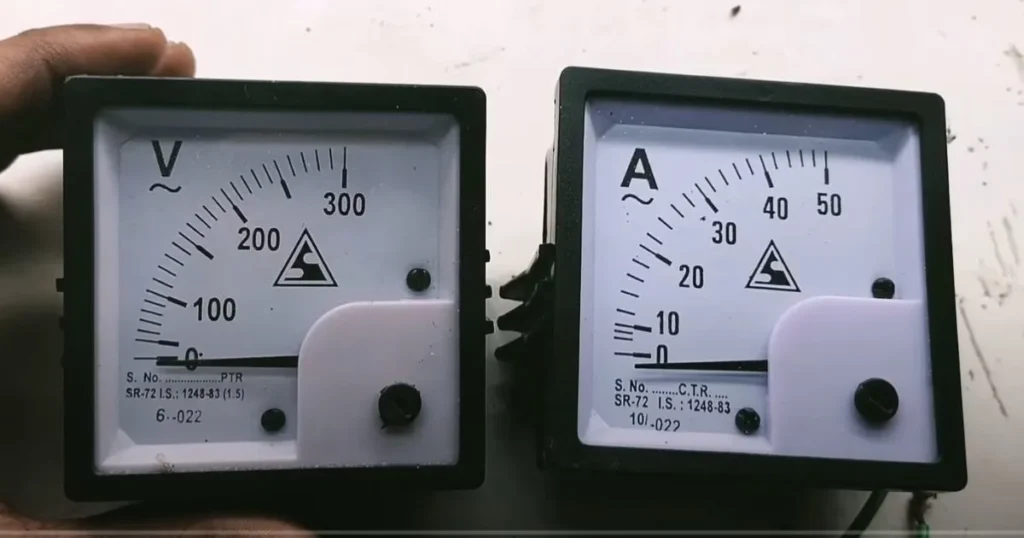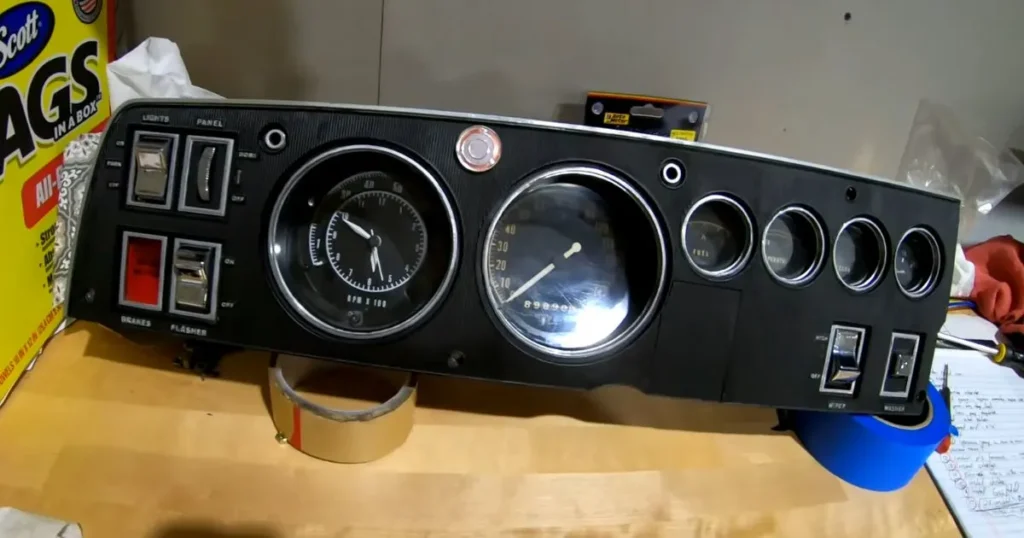
A car ammeter measures the current flow in amperes within the vehicle's electrical system. It indicates whether the alternator is properly charging the battery or not.
Understanding how a car ammeter works is essential for diagnosing electrical issues and ensuring your vehicle runs smoothly. This small, yet crucial instrument is wired in series with the electrical system and responds to the flow of current. It provides real-time monitoring, helping to prevent battery drain and potential electrical failures.
The ammeter is a key tool in maintaining the health of a car’s electrical components, from the headlights to the stereo system. By keeping an eye on the ammeter, drivers can catch charging problems before they escalate, ensuring a reliable ride.
Introduction To Car Ammeter
Understanding how your car works is key to proper maintenance. A car ammeter is an essential tool. It measures the electric current in the vehicle.
Purpose Of An Car Ammeter In A Vehicle
Ammeters help prevent electrical issues. They monitor the current to and from the battery. This ensures the electrical system runs smoothly.
- Tracks battery charging
- Identifies electrical faults
- Prevents battery drain
Brief History Of Car Ammeter
The first car ammeters appeared in early vehicles. They evolved from simple designs to today's sophisticated tools.
| Year | Development |
|---|---|
| Early 1900s | Introduction of basic ammeters |
| Mid-1900s | Improved accuracy and reliability |
| Modern Day | Digital ammeters with advanced features |

Electrical Fundamentals
Before we dive into how a car ammeter works, let's understand some electrical fundamentals. This knowledge is crucial. It helps us see the big picture.
Basic Principles Of Electricity
Electricity is a form of energy. It flows through wires. This flow powers our cars. Imagine it like water flowing through pipes.
- Voltage is like water pressure. It pushes electricity through wires.
- Current (measured in Amperes) is the flow rate of electricity.
- Resistance is anything that slows the flow down.
Understanding Current Flow
Current moves from the battery to power the car. Then, it returns to the battery. This complete path is a circuit.
An ammeter measures this flow. It shows if the current is strong or weak. A strong current means lots of power. A weak current means something might be wrong.
| Condition | Current Strength | Meaning |
|---|---|---|
| Normal | Strong | Car is healthy. |
| Problem | Weak | Check the car. |
Anatomy Of A Car Ammeter
Understanding how a car ammeter works is vital for any vehicle owner. This instrument measures the current flow in electrical devices. In cars, it monitors the charging system's performance.
Let's explore the internal makeup of a car ammeter. Its design ensures accurate readings of electric current.
Internal Components
- Moving Coil - Responds to electrical current.
- Magnet - Creates a stable magnetic field.
- Hair Car Spring - Controls the coil's movement.
- Calibration Screws - Allow for precise adjustments.
Types Of Car Ammeter
There are several ammeters, each with unique features.
| Type | Feature |
|---|---|
| Analog | Uses a needle to display current. |
| Digital | Shows precise numeric readings. |
| Shunt | Diverts current for measurement. |
| Inductive | Measures without direct contact. |

Ammeter Vs. Voltmeter
Understanding your car's electrical system is crucial. Two main instruments can help: ammeters and voltmeters. They may seem similar, but they serve different purposes. An ammeter measures current flow in amperes. A voltmeter, on the other hand, checks the electrical potential difference in volts.
Key Differences
Ammeters and voltmeters are unique in their functions. Here's a breakdown of their differences:
- Ammeters measure current.
- Voltmeters measure voltage.
- Ammeters connect in series.
- Voltmeters connect across components.
These differences determine how they integrate into your car's circuitry.
Which Is Right for Your Car?
Which Ammeter Is Right For Your Car?
Choosing the right instrument depends on your needs. Use an ammeter to monitor overall current flow. For battery health and system voltage, a voltmeter is better. Some modern cars have built-in monitoring systems. These systems may display both current and voltage readings.
| Instrument | Measurement | Connection | Use Case |
|---|---|---|---|
| Ammeter | Current (Amperes) | Series | Current flow |
| Voltmeter | Voltage (Volts) | Parallel | Battery & system health |
Consult your car manual or a professional if unsure. They can advise you on the best instrument for your car's electrical system.
Installing A Car Ammeter
Installing a car ammeter helps monitor your vehicle's electrical system. An ammeter shows the current flow in amps. It's crucial for a healthy car electrical system. Here's a guide to install a car ammeter.
Step-by-step Guide
- Disconnect the negative battery cable to ensure safety.
- Choose the ammeter location for easy reading while driving.
- Mount the ammeter securely to avoid movement and damage.
- Run the wires from the ammeter to the vehicle’s electrical system.
- Connect the ammeter's positive wire to the battery's positive terminal.
- Link the ammeter's negative wire to the car's ground.
- Reconnect the battery and test the ammeter for proper operation.
Common Installation Pitfalls
- Incorrect Wiring: Ensure correct positive and negative connections.
- Loose Connections: Tighten all connections to prevent malfunctions.
- Poor Location: Install the ammeter where it's visible and accessible.
- Wrong Ammeter Size: Match the ammeter to your car's electrical specs.
- Fusing Issues: Install a fuse to protect the ammeter and wiring.

Reading An Car Ammeter
Reading an Ammeter reveals how much current flows through a car's electrical system. This tool is crucial for maintaining a healthy vehicle. Let's dive into interpreting these readings accurately.
Interpreting Measurements
To understand an ammeter, know that it measures current in amperes. A needle or digital reading shows this value. Positive readings suggest charging; negative ones indicate discharging.
- Above zero: Your alternator is charging the battery.
- At zero: The battery's current state is stable.
- Below zero: The battery is using its reserve power.
Common Readings And Meanings
Different readings on an ammeter help diagnose car health. Here are common ones:
| Reading | Meaning |
|---|---|
| +10 to +30 A | Battery charging normally |
| 0 A | No charge or discharge |
| -10 to -30 A | Possible electrical issue |

Troubleshooting Car Ammeter Issues
Troubleshooting Ammeter Issues can seem daunting at first. Yet, with the right approach, it becomes manageable. Understanding the common problems and knowing some DIY solutions can save both time and money. Let’s dive into how to keep your car’s ammeter in top shape.
Common Problems
- Erratic readings: The needle jumps around.
- No reading: The ammeter shows no activity.
- Constant high reading: It indicates a possible short circuit.
These issues often stem from loose connections or faulty wiring.
Diy Solutions
Addressing ammeter issues can be straightforward. Follow these steps:
- Check all connections. Tighten any loose ones.
- Inspect the wiring for damage. Replace if necessary.
- Ensure the ammeter is properly grounded.
- If problems persist, test the ammeter with a multimeter.
Seek professional help if issues remain unresolved.
Maintenance And Care
Maintaining your car's ammeter ensures accurate readings and a healthy electrical system. Regular care keeps the ammeter working well. It also helps avoid car troubles. Let's dive into how to keep your ammeter in top shape.
Routine Checks
Regular inspections are key for ammeter function. Check for loose connections and signs of corrosion. Ensure wires are intact and secure. A simple visual check can prevent many issues.
- Test the ammeter for correct operation during each service.
- Clean the terminals to prevent poor conductivity.
- Look for wear and tear that might need professional attention.
Longevity Tips For Your Car Ammeter
Maximize your ammeter's lifespan with these tips. They help maintain performance and reliability.
- Avoid exposing the ammeter to extreme temperatures.
- Keep the car's battery in good condition; it affects the ammeter.
- Use electrical components within their limits to reduce strain.
Follow the manufacturer's guidelines for specific care instructions. Replace the ammeter if it shows continuous faults. This ensures safety and accuracy.
Related Post
Top 7 Reasons Your Car Tachometer Might Be Out of Service: Critical Insights
Expert Tips: Master Car Maintenance with a Vacuum Gauge!
Car Temperature Gauge Drops: Quick Fixes & Tips
Why Your Car Water Temperature Meter Safeguards Engine Health
Conclusion
Understanding your car's ammeter is crucial for maintaining vehicle health. It alerts you to charging system issues, helping avoid costly repairs. Keep an eye on this handy gauge; it's your dashboard's silent guardian. For any car enthusiast or responsible driver, grasping ammeter function is a step toward smarter, safer driving.
Stay charged, stay informed!
Disclosure
Some links may be affiliate links. That means we may earn a small commission at no extra cost to you.